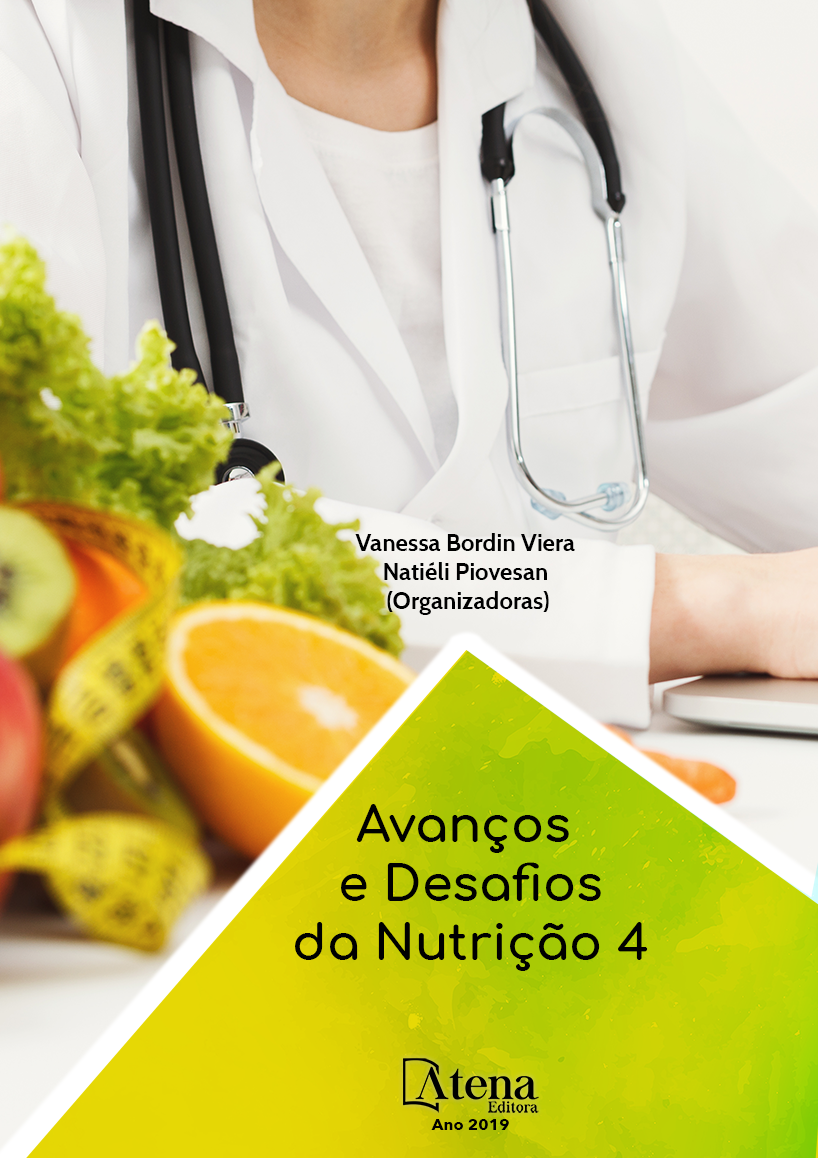
EXTRAÇÃO DE COMPOSTOS BIOATIVOS POR ULTRASSOM DAS SEMENTES DE INGÁ (Inga marginata Willd)
O fruto Ingá (Inga marginata Willd) é
nativo da Mata Atlântica, também é conhecido
como ingá-mirim ou ingá-feijão. As sementes
de Ingá, em número, são de 2 a 13 por fruto
são envoltas por uma polpa branca e aquosa.
Se tornam um resíduo, portanto descartada. O
objetivo deste trabalho é extrair os compostos
bioativos presentes nas sementes do Ingá
por ultrassom, em diferentes temperaturas.
As sementes foram obtidas no comércio local
e foram higienizadas e sanitizadas. Secas
em estufa com ventilação a 45 ± 5 °C por 48
horas, trituradas e armazenadas. Os extratos
hidroalcoólicos das sementes do Ingá foram
Avanços e Desafios da Nutrição 4 Capítulo 8 76
obtidos em triplicata e preparados a partir da amostra moída, e adicionado de álcool
de cereais 70%. Para a realização da extração assistida por ultrassom, as sementes
com o álcool de cereais foram imersas em banho ultrassônico, durante 20 minutos
nas temperaturas de 30 e 60°C. Foi realizada a determinação de compostos fenólicos
totais, flavonoides totais, DPPH, IC50, e ORAC. Para alguns ensaios a temperatura de
30ºC foi a melhor para extração, como a extração de compostos fenólicos totais e para
a atividade antioxidante (ORAC), já para flavonoides totais e DPPH (IC50), não houve
diferença significativa entre as temperaturas de extração. Considerando a importância
econômica e nutricional do aproveitamento das partes usualmente desprezadas de
frutas, a semente de Inga marginata Willd pode ser considerada uma promissora fonte
natural de obtenção de extratos ricos em compostos bioativos.
EXTRAÇÃO DE COMPOSTOS BIOATIVOS POR ULTRASSOM DAS SEMENTES DE INGÁ (Inga marginata Willd)
-
DOI: 10.22533/at.ed.4391924058
-
Palavras-chave: Fruto; Temperatura; Resíduo; Atividade Antioxidante.
-
Keywords: Fruit; Temperature; Residue; Antioxidant activity.
-
Abstract:
The Ingá fruit (Inga marginata Willd) is native to the Atlantic Forest, it is
also known as ingá-mirim or ingá-beijão. The seeds of Ingá, in number, are 2 to 13 per
fruit are surrounded by a white and aqueous pulp. They become a waste, so discarded.
The objective of this work is to extract the bioactive compounds present in Ingá seeds
by ultrasound, at different temperatures. The seeds were obtained in local commerce
and were sanitized and sanitized. Dried in greenhouse with ventilation at 45 ± 5 ° C
for 48 hours, crushed and stored. The hydroalcoholic extracts from the Ingá seeds
were obtained in triplicate and prepared from the ground sample, and added with 70%
cereal alcohol. To perform the ultrasonic assisted extraction, the seeds with the cereal
alcohol were immersed in an ultrasonic bath for 20 minutes at temperatures of 30
and 60°C. Total phenolic compounds, total flavonoids, DPPH, IC50, and ORAC were
determined. For some experiments the temperature of 30ºC was the best for extraction,
as extraction of total phenolic compounds and antioxidant activity (ORAC), for total
flavonoids and DPPH (IC50), there was no significant difference between extraction
temperatures. Considering the economic and nutritional importance of the use of the
usually neglected parts of fruits, the Inga marginata Willd seed can be considered a
promising natural source of extracts rich in bioactive compounds.
-
Número de páginas: 15
- Claudia Severo da Rosa
- Grazielle Castagna Cezimbra Weis
- Jéssica Righi da Rosa
- Marcela Bromberger Soquetta
- Vanessa Bordin Viera
- Natiéli Piovesan
- Jamila dos Santos Alves
- Bruna Nichelle Lucas
- Caroline Pagnossim Boeira
- Déborah Cristina Barcelos Flores


